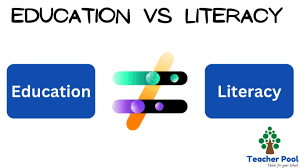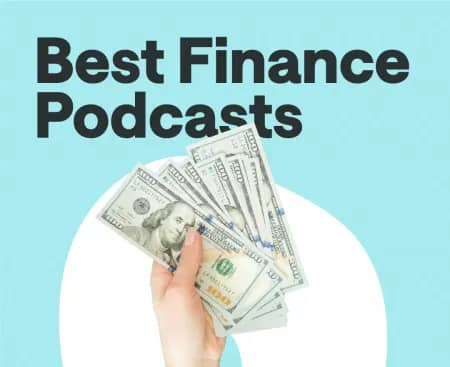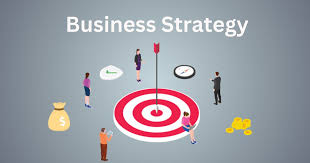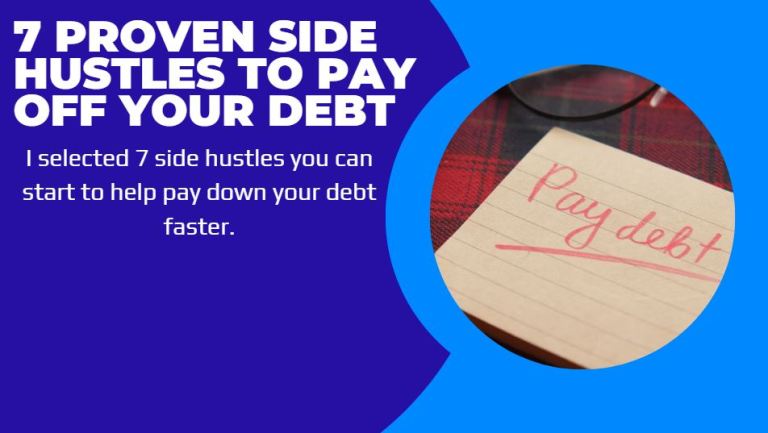Debt-Free Living: A Step-by-Step Guide to Escape Your Financial Burden
Living with debt can feel like you’re carrying a heavy burden. If you’re reading this, chances are you’re looking for a way to break free. In the United States, consumer debt has reached staggering heights, contributing to anxiety and financial instability for millions of Americans. According to recent statistics from the Federal Reserve, U.S. consumers owed over $15 trillion in debt.
But what if I told you that a debt-free life is achievable? It requires commitment and a strategic approach, but pushing through the struggles will eventually lead to financial freedom. As the American author and motivational speaker Zig Ziglar said, “Money isn’t everything, but it ranks right up there with oxygen.”
In this comprehensive guide, we’ll walk you through a step-by-step process to eliminate your debt and regain control over your finances. Let’s get started!
Understanding Your Debt
Before you can escape your financial burden, it’s necessary to understand exactly what you’re dealing with. This means taking inventory of your debts.
Step 1: List Out Your Debts
- Credit Card Debt
- Student Loans
- Personal Loans
- Auto Loans
- Mortgages
Tips for Listing out your debts
- Gather Your Statements: Collect all statements related to your debt.
- Document Interest Rates: Note the interest rates and monthly payments.
- Identify Minimum Payments: Write down the minimum payments required for each debt.
Step 2: Analysis
Once you’ve listed all your debts, it’s time to analyze them. Understanding the types of debt you owe helps you create an effective payoff plan.
- High-Interest Debt: Credit cards often have the highest interest rates.
- Low-Interest Debt: Mortgages usually have lower interest rates in comparison.
As financial expert Dave Ramsey says, “You must gain control over your money or the lack of it will forever control you.” Analyze your spending habits and pinpoint areas to cut back.
Building Your Budget
Now that you know what you’re dealing with, the next step is creating a budget. A budget is your financial roadmap, allowing you to see where funds go.
Step 3: Create a Monthly Budget
To build a solid budget, follow these guidelines:
- Calculate Your Income: Include all sources of income.
- Track Fixed Expenses: Rent, utilities, insurance, groceries, etc.
- Identify Variable Expenses: Entertainment, dining out, fashion, etc.
Use the 50/30/20 Rule:
- 50% of your income for needs (essentials like housing and groceries)
- 30% for wants (discretionary spending)
- 20% for savings and debt repayment
Step 4: Emergency Fund
Before aggressively tackling debt, it’s wise to have a small emergency fund. Start with $1,000.
– Why? This will prevent you from falling back into debt when unexpected expenses arise.
Financial educator Jean Chatzky states, “The most powerful thing you can do is to have a goal and a way to measure your progress.”
Developing a Debt Payoff Strategy
At this stage, you’ll want to create a clear strategy for paying off your debts.
Step 5: Choose a Payoff Method
There are two popular methods for paying off debt.
-
Debt Snowball Method
- List debts from smallest to largest.
- Focus on the smallest debt first.
- Pay minimums on all others.
- Once the smallest is paid off, move to the next.
-
Debt Avalanche Method
- List debts from highest to lowest interest rate.
- Focus on the debt with the highest interest first.
- This method can save you more money on interest in the long run.
Step 6: Negotiate Lower Interest Rates
Don’t hesitate to reach out to creditors to negotiate your interest rates. You might be surprised at how willing they are to help you.
- Tips for Negotiation:
- Be polite and honest about your financial situation.
- Ask for reduced interest rates or payment plans.
- Consider balance transfer options for high-interest credit cards.
As financial author Suze Orman once said, “Financial freedom is available to those who learn about it and work for it.”
Taking Control of Your Expenses
Once you’ve laid the groundwork, it’s time to focus on taking control of your expenses.
Step 7: Cut Unnecessary Expenses
Review your budget and identify areas where you can cut back.
- Monthly Subscriptions: Cancel what you don’t use regularly.
- Dining Out: Limit how often you eat out each month.
- Shopping Habits: Reassess your spending habits—can you go without new clothes for a while?
Step 8: Boost Your Income
If cutting expenses isn’t enough, consider finding ways to increase your income.
- Freelancing: Use your skills on freelance platforms.
- Part-Time Jobs: Pick up a part-time job that fits your schedule.
- Sell Unwanted Items: Platforms like eBay and Facebook Marketplace can help you declutter while making extra cash.
Staying Motivated
Debt repayment is often a long road, so maintaining motivation is critical.
Step 9: Set Milestones
Dividing your debts into milestones can make the journey less daunting.
- Celebrate Small Wins: Treat yourself (within reason) for each debt you pay off.
- Visual Aids: Consider a debt payoff chart to visualize your progress.
Step 10: Surround Yourself with Support
Don’t do this alone. Share your goals with friends or family who will encourage and hold you accountable.
“In the end, you won’t remember the time you spent working in the office or mowing your lawn,” said author Jack Kerouac, but rather the time you spent with those who matter.
Keeping the Momentum
After you’ve achieved your goal of being debt-free, maintaining that freedom is crucial.
Step 11: Avoiding Future Debt
- Create a Budget: Continually budget to avoid overspending.
- Build an Emergency Fund: Gradually increase your emergency fund to cover 3-6 months of living expenses.
- Be Mindful of Credit Cards: Treat credit cards as a tool, not a lifestyle.
Step 12: Educate Yourself
Financial literacy is an ongoing process. Read books, listen to podcasts, or attend workshops.
Some recommended resources:
- “The Total Money Makeover” by Dave Ramsey
- “Your Money or Your Life” by Vicki Robin
- Podcasts like “The Dave Ramsey Show”
Achieving a debt-free life requires confirmation, dedication, and a solid strategy. With the right tools and mindset, you can break free from the weight of financial burden and achieve the freedom you deserve, because, debt isn’t a life sentence; it’s a temporary obstacle.
By taking these steps and being diligent with your efforts, you can change your financial future. The journey may be long, but the outcome—financial freedom—is absolutely worth it. Now, go ahead and start your journey to a debt-free life today.









tadalafil hong kong cialis tadalafil & dapoxetine or usa peptides tadalafil
https://www.google.com.nf/url?q=http://tadalaccess.com cialis for sale brand
cialis tadalafil 5mg once a day cialis 20mg price and what is cialis good for cialis before and after pictures
https://tadalaccess.com/# cialis maximum dose
centurion laboratories tadalafil review: TadalAccess – tadalafil (megalis-macleods) reviews
cialis not working anymore cialis trial pack or cialis over the counter usa
https://toolbarqueries.google.co.ug/url?q=http://tadalaccess.com cialis contraindications
cialis generic timeline 2018 cialis trial and cialis for sale online what is the use of tadalafil tablets
cialis professional vs cialis super active cheap cialis online tadalafil or sunrise pharmaceutical tadalafil
https://www.telltrail.com/profile/leaving-our-protection?url=https://tadalaccess.com cialis recommended dosage
how to get cialis prescription online cialis online delivery overnight and buy tadalafil online canada buy cialis online in austalia
cialis difficulty ejaculating TadalAccess what is the active ingredient in cialis
https://tadalaccess.com/# buying cialis online usa
cialis at canadian pharmacy Tadal Access cialis side effects forum
buy generic cialis: Tadal Access – canada cialis
buy liquid tadalafil online cialis free 30 day trial or cialis how does it work
https://maps.google.com.sg/url?sa=t&url=https://tadalaccess.com buy cialis online in austalia
cialis 20mg price overnight cialis delivery usa and generic cialis super active tadalafil 20mg tadalafil without a doctor prescription
cialis tablets cialis windsor canada or buy cialis no prescription
https://cse.google.com.pg/url?sa=t&url=https://tadalaccess.com u.s. pharmacy prices for cialis
buy cialis online reddit tadalafil 20 mg directions and cialis 5 mg overnight cialis delivery usa
https://tadalaccess.com/# canadian pharmacy cialis brand
does cialis raise blood pressure TadalAccess cialis free sample
canada cialis generic how long does it take for cialis to start working or how much does cialis cost at walgreens
http://clients1.google.im/url?q=https://tadalaccess.com cialis walmart
cialis in las vegas cialis difficulty ejaculating and how long does cialis take to work 10mg can you drink wine or liquor if you took in tadalafil
when will generic cialis be available in the us: cialis otc switch – cialis tadalafil 20mg price
cialis cost at cvs cheap cialis online overnight shipping how many 5mg cialis can i take at once
cialis tadalafil: cialis generics – cialis with out a prescription
https://tadalaccess.com/# free samples of cialis
cialis 20 mg from united kingdom where to get the best price on cialis or cialis no perscription overnight delivery
http://intra.etinar.com/xampp/phpinfo.php?a=Viagra+generic cialis tadalafil
best price for cialis tadalafil and ambrisentan newjm 2015 and cialis max dose cialis not working first time
best place to buy liquid tadalafil: shop for cialis – sildenafil vs tadalafil which is better
cialis otc switch TadalAccess where can i buy cialis
cialis prescription online overnight cialis or cialis generic over the counter
https://www.google.com.na/url?q=https://tadalaccess.com over the counter cialis
mantra 10 tadalafil tablets tadalafil 5 mg tablet and can tadalafil cure erectile dysfunction best price for cialis
https://tadalaccess.com/# mint pharmaceuticals tadalafil reviews
buy cialis online usa cialis blood pressure or cialis 10mg ireland
http://vm-01.magneticgrid.com/info.php?a=where+can+i+buy+viagra+online+cheap</a buy cialis cheap fast delivery
pastilla cialis cialis 20 mg from united kingdom and tadalafil cheapest price cheapest 10mg cialis
cialis for daily use reviews: TadalAccess – what is the normal dose of cialis
prescription free cialis TadalAccess cialis black review
https://tadalaccess.com/# truth behind generic cialis
cialis soft tabs canadian pharmacy best place to get cialis without pesricption or prescription for cialis
http://webradio.fm/webtop.cfm?site=http://tadalaccess.com paypal cialis no prescription
cialis for women cialis generico and cheap cialis for sale is generic cialis available in canada
how to get cialis without doctor: TadalAccess – cialis from canada
cialis images TadalAccess cialis free trial voucher
cialis for sale tadalafil tamsulosin combination or printable cialis coupon
https://toolbarqueries.google.hu/url?q=http://tadalaccess.com can you drink alcohol with cialis
cialis 5mg review cheap cialis for sale and tadalafil canada is it safe how to get cialis for free
cialis com free sample: TadalAccess – printable cialis coupon
https://tadalaccess.com/# cialis coupon rite aid
cialis genetic Tadal Access cialis 20 mg how long does it take to work
cialis how long cialis canada price or order cialis online no prescription reviews
https://maps.google.mn/url?q=https://tadalaccess.com bph treatment cialis
tadalafil hong kong cialis 10mg price and is tadalafil and cialis the same thing? us pharmacy prices for cialis
buy antibiotics online: BiotPharm – cheapest antibiotics
get antibiotics quickly: buy antibiotics online uk – buy antibiotics from canada
buy antibiotics: Biot Pharm – Over the counter antibiotics for infection
Licensed online pharmacy AU Buy medicine online Australia Online medication store Australia
https://pharmau24.shop/# Licensed online pharmacy AU
Ero Pharm Fast: Ero Pharm Fast – Ero Pharm Fast
Discount pharmacy Australia: PharmAu24 – Buy medicine online Australia
buy ed meds: Ero Pharm Fast – ed medicine online
get antibiotics without seeing a doctor buy antibiotics online best online doctor for antibiotics
https://eropharmfast.com/# ed drugs online
online pharmacy australia: online pharmacy australia – Pharm Au 24
edmeds: ed medicine online – ed meds by mail
https://biotpharm.com/# best online doctor for antibiotics
Pharm Au24: online pharmacy australia – Discount pharmacy Australia
PharmAu24 Pharm Au 24 Pharm Au 24
ed medicines online erectile dysfunction online prescription or where to buy erectile dysfunction pills
http://logen.ru/bitrix/redirect.php?goto=https://eropharmfast.com buy ed pills online
cheap erectile dysfunction pills ed medicines online and low cost ed meds edmeds
buy antibiotics online: Biot Pharm – buy antibiotics online
buy antibiotics from india buy antibiotics from india or buy antibiotics from canada
https://www.maha-cz.cz/cz/poslat-dotaz/?url=http://biotpharm.com/ buy antibiotics for uti
buy antibiotics from india get antibiotics quickly and cheapest antibiotics Over the counter antibiotics pills
online ed meds: Ero Pharm Fast – cheapest ed online
https://pharmau24.shop/# Medications online Australia
get antibiotics quickly: BiotPharm – buy antibiotics from canada
cheapest antibiotics: buy antibiotics online uk – buy antibiotics online
PharmAu24 Pharm Au24 or PharmAu24
http://2ch.io/pharmau24.shop Online medication store Australia
Medications online Australia Discount pharmacy Australia and Online drugstore Australia Online medication store Australia
buy antibiotics: buy antibiotics online uk – buy antibiotics
online ed pills what is the cheapest ed medication or online ed pills
http://presto-pre.com/modules/wordpress/wp-ktai.php?view=redir&url=https://eropharmfast.com ed meds by mail
best online ed medication order ed pills and cheap ed treatment erectile dysfunction pills for sale
Medications online Australia Discount pharmacy Australia PharmAu24
ed online meds: Ero Pharm Fast – Ero Pharm Fast
https://biotpharm.shop/# cheapest antibiotics
Ero Pharm Fast: ed pills cheap – cheap ed meds
buy antibiotics over the counter buy antibiotics from india or antibiotic without presription
http://db.cbservices.org/cbs.nsf/forward?openform&http://biotpharm.com/ get antibiotics quickly
buy antibiotics from canada over the counter antibiotics and Over the counter antibiotics pills get antibiotics quickly
buy antibiotics from india: buy antibiotics online – over the counter antibiotics
Discount pharmacy Australia Pharm Au 24 or Buy medicine online Australia
https://maps.google.cz/url?sa=t&url=https://pharmau24.shop Online medication store Australia
Discount pharmacy Australia online pharmacy australia and online pharmacy australia Medications online Australia
antibiotic without presription buy antibiotics online buy antibiotics
buy antibiotics: Biot Pharm – buy antibiotics over the counter
erectile dysfunction pills for sale ed medications online or ed med online
http://familie-huettler.de/link.php?link=eropharmfast.com/ erectile dysfunction medication online
order ed pills where can i buy erectile dysfunction pills and cheapest online ed treatment п»їed pills online
cheapest antibiotics buy antibiotics for uti or Over the counter antibiotics for infection
https://www.knuckleheads.dk/forum/ucp.php?mode=logout&redirect=http://biotpharm.com buy antibiotics from india
Over the counter antibiotics pills get antibiotics without seeing a doctor and best online doctor for antibiotics buy antibiotics
erection pills online erectile dysfunction pills online or order ed pills
https://cse.google.co.ve/url?q=https://eropharmfast.com ed medication online
affordable ed medication buy erectile dysfunction medication and how to get ed pills get ed prescription online